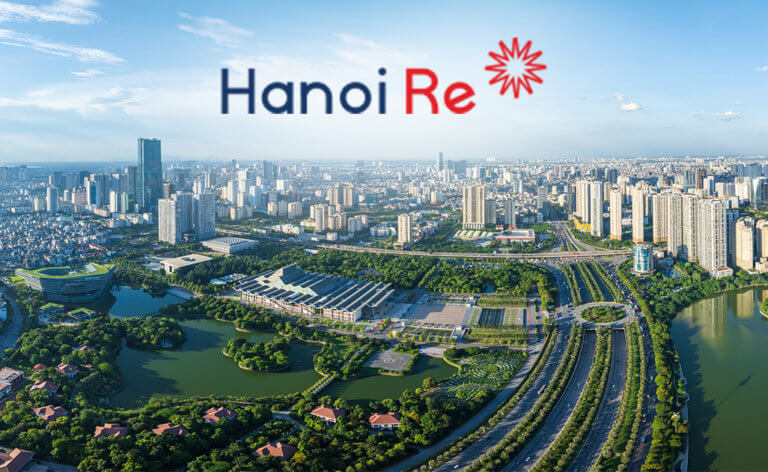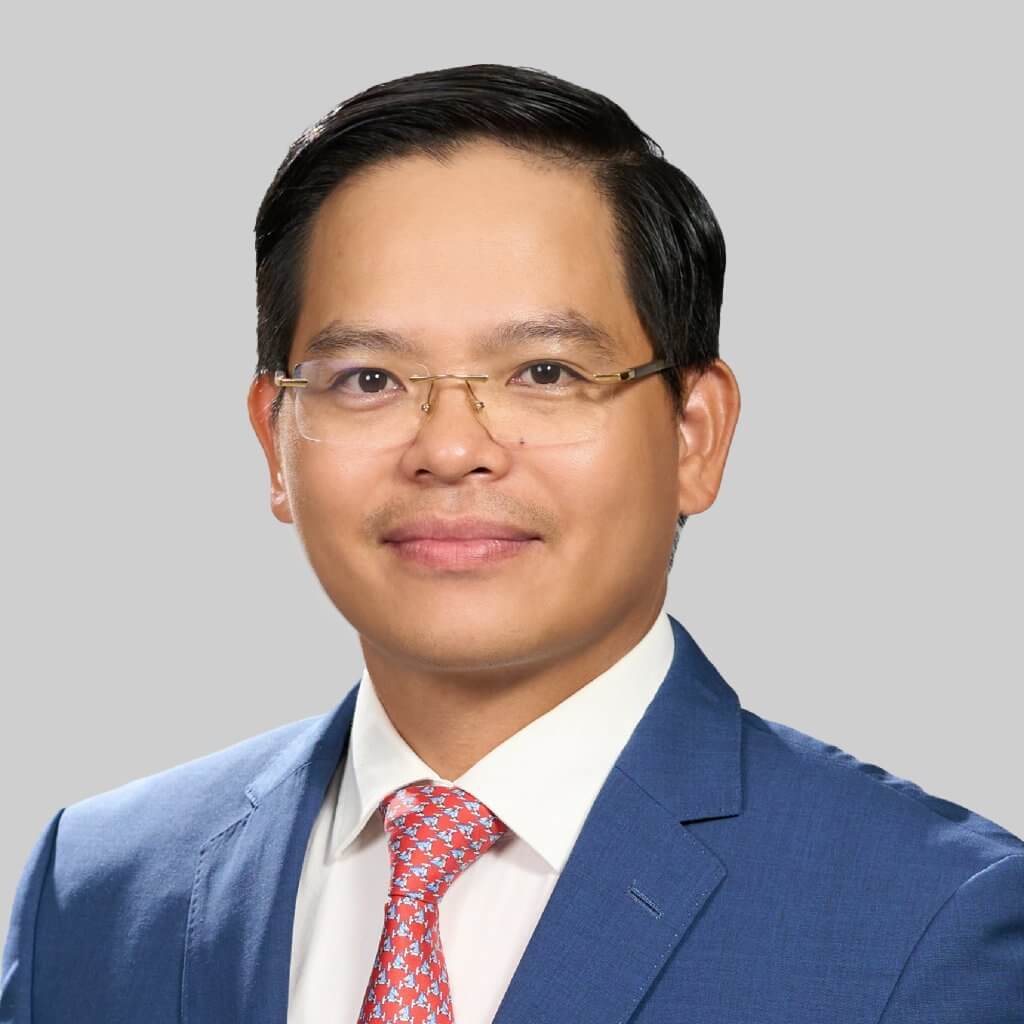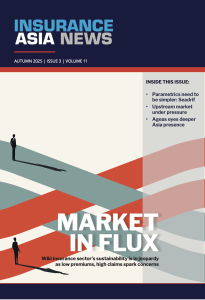SIRC: Not just capital: Hanoi Re in active discussions with strategic investors to grow business in Southeast Asia and beyond
November 5 2025 by Joana Nguyen
Vietnamese reinsurer Hanoi Re is in active discussions with prospective strategic foreign shareholders as it is seeking a partner to grow its business, said Francois Duong Thanh Danh, standing vice chairman of PVI Holdings and vice chairman of Hanoi Re.
“Our priority is a partner that brings service capabilities and a steady flow of business to Hanoi Re – not just capital. The objective is to accelerate revenue growth, deepen our technical offering and open new distribution gateways,” he said.
“Combined with the strengths and international credibility of HDI Global, this strategy supports our ambition to achieve an A financial strength rating and to broaden our global underwriting footprint, while staying aligned with Vietnam’s RBC regime.”
PVI Holdings, which is owned almost 55% by HDI Global and affiliated party, currently holds an 81.09% stake in Hanoi Re and is open to divesting up to 30% of its shares, InsuranceAsia News reported earlier.
“In terms of geography, we are building on our strong foundation in Southeast Asia, Laos, Cambodia, Myanmar, Malaysia and Singapore, where we have longstanding client relationships, deep market understanding and proven claims experience,” said Hanoi Re CEO Anh Tuan Trinh.
“From this base, we have expanded across Asia with a growing presence in South Korea, China, India, Nepal, Bangladesh, Sri Lanka and Mongolia. In parallel, we have extended our footprint into the Middle East and Africa, with active business in the UAE, Kuwait, Qatar, Bahrain; Ghana, Egypt, Kenya, South Africa, Algeria and Angola.”

“Above all, we are known for keeping our promises and paying valid claims quickly - a core differentiator that earns trust in competitive markets.”
Anh Tuan Trinh, Hanoi Re
Meanwhile, Hanoi Re will look to strengthen its core non-life treaty portfolio, especially property, engineering and marine, while developing specialty and liability.
“In tandem, we will broaden facultative to enhance underwriting quality and optimise our overall risk portfolio,” Trinh said.
Hanoi Re is also investing in digital transformation and data analytics to sharpen pricing, enhance service efficiency and reduce friction for clients.
“Above all, we are known for keeping our promises and paying valid claims quickly – a core differentiator that earns trust in competitive markets,” Trinh said.
Renewal outlook
“We expect an orderly renewal season. For property, particularly catastrophe exposed business, there is measured softening for well performing, loss-free programs as competition increases, consistent with market signals from Monte Carlo,” Trinh said, adding that up to 10–15% risk adjusted rate reduction can be expected on clean accounts, while loss affected/peak programs will still see disciplined pricing.
“Capacity for quality portfolios is ample, underpinned by strong reinsurer balance sheets and record ILS/cat bond issuance through 2025.”
On retentions, buyers are seeking relief and there is debate around attachment points and the reintroduction of aggregate/frequency protections, he said.
“In practice, we expect many programs to hold broadly stable on attachments, with structured solutions used to manage earnings volatility,” Trinh said.
Vietnam’s nat cat losses
Typhoon Yagi in September 2024 was a watershed event, said Trinh.
“Vietnam’s authorities later estimated VND81.5 trillion (US$3.3 billion) in damage and largescale human loss, setting a higher reference point for nat cat risk and reinsurer selectivity.”
In late September–early October 2025, Typhoon Bualoi brought severe flooding across northcentral provinces. Soon after, Typhoon Matmo triggered widespread flooding in northern Vietnam.
Most recently in October, record breaking rainfall has caused major flooding in central Vietnam—including Hue and Hoi An—disrupting transport and tourism and reinforcing market attention on hydrometeorological perils.
“While insured property losses from these recent events are below Yagi’s scale, they are nontrivial and more broadly distributed,” Trinh said.
“Notably, motor claims from flooding have been widespread; we expect this to increase demand for portfolio protections (e.g., motor aggregate/stoploss, quota share) as insurers seek to stabilize earnings through the rainy season.”
Hanoi Re’s role is to combine disciplined underwriting with local insight to help cedents structure resilient programs, securing stable capacity and sustainable pricing, he said.
Opportunities, challenges
Hanoi Re sees a wide range of opportunities in Vietnam and the wider APAC region, said Trinh.
Specifically, infrastructure and industrial growth in energy, transport, manufacturing and logistics sectors is expanding the insurable base for engineering, property and BI.
Meanwhile, climate adaptation is creating demand for parametric and public–private disaster risk financing solutions.
Low insurance penetration, especially among SMEs, can support growth via proportional treaties with stronger pricing discipline and reinsurer support, he added.
Moreover, for midsized, reliable capacity providers, regional diversification across Southeast Asia enables balanced portfolios and co reinsurance participation.
Lastly, Vietnam’s move toward RBC encourages cedents to optimise programs and seek high quality capacity, according to Trinh.
However, this promising landscape is tempered by several significant challenges.
The increasing frequency and severity of secondary perils, such as flooding, convective storms and typhoons, are stressing pricing adequacy and accumulation management.
Additionally regulatory change and compliance demand better capital allocation, technical reserving and reporting discipline, he said.
“Data quality and transparency remain uneven in parts of the market, constraining pricing and modelling accuracy,” Trinh added.
“Besides, the intensifying competition as global reinsurers stay selective and profitability-focused makes the speed, discipline and local expertise critical differentiators for Hanoi Re.”
-
QBE | Elevating customer experience, humanising claims: QBE Asia’s ‘Solutions in a Box’
Vastly improving turnaround times and personalising service delivery, QBE Asia’s award-winning, end-to-end bundled claims solutions is a game-changer for the insurance industry.
-
Beazley | What does cyber protection look like from day 1 to day 600 and beyond?
Cybersecurity is no longer just an IT concern, but a governance issue that belongs on the boardroom agenda.
-
Sedgwick | Preparing for the next storm
Insurance industry needs to recalibrate, invest in innovation and strengthen systems, talent and data practices.
-
Peak Re | From climate modelling to market opportunity: Forging a new clarity on Southeast Asia’s climate risk
Southeast Asia's protection gap: a crisis of clarity, not just capital

